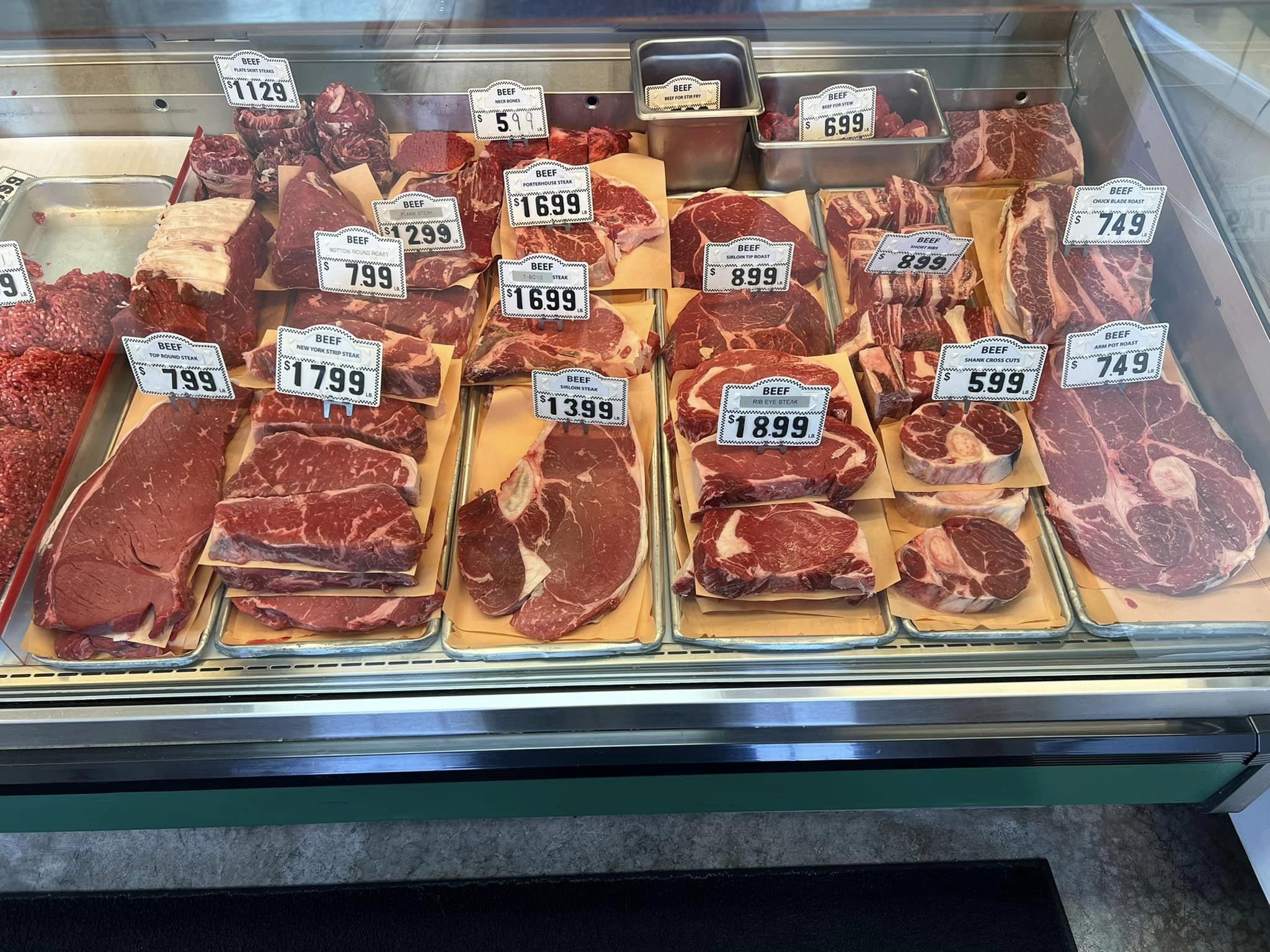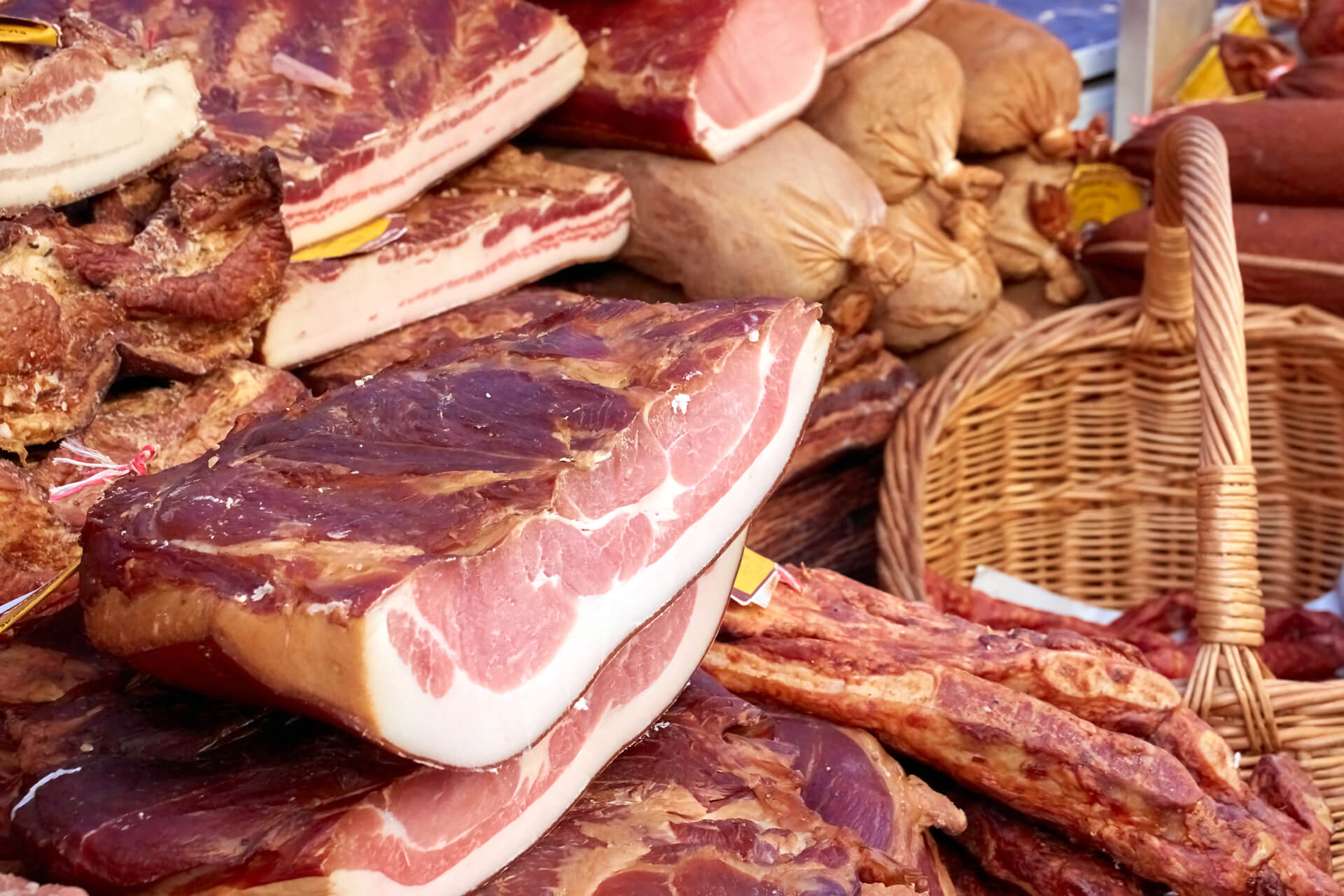Check Out the Neighborhood Taste at Bagley Farms Meat Market Edwardsville IL: Fresh and Delicious
Check Out the Neighborhood Taste at Bagley Farms Meat Market Edwardsville IL: Fresh and Delicious
Blog Article
Discover the Art of the Butcher's Cut in a Modern Meat Market
In the ever-evolving landscape of contemporary meat markets, the butcher's cut has transcended its typical origins, combining olden craftsmanship with contemporary practices. What absolutely establishes the modern-day butcher apart is their capability to create a deeper connection in between customers and the origins of their meat.
Evolution of Butchery Strategies
The development of butchery techniques mirrors a rich tapestry of innovation and adjustment driven by developments in technology, adjustments in customer demand, and a much deeper understanding of meat science. Historically, butchery was a craft gave via generations, with techniques honed over centuries to make the most of return and flavor. Nonetheless, the industrial transformation ushered in automation, transforming standard practices and making it possible for large-scale processing.
The mid-20th century saw butchery strategies further fine-tuned by clinical insights right into muscle biology and meat aging, enhancing both tenderness and preference. Technologies like vacuum packaging and refrigeration expanded item shelf-life, allowing butchers to diversify offerings and enhance quality assurance. This period also marked the surge of customized equipment, such as band saws and meat slicers, which enhanced precision and effectiveness in meat handling.

The 21st century has actually presented electronic technology into the butchery world. Electronic systems currently assist in monitoring pet provenance and optimizing cuts to meet details customer preferences. Additionally, a resurgence in artisanal butchery has arised, mixing standard abilities with modern-day knowledge to provide to customers seeking ethical and lasting meat choices. This advancement underscores a vibrant interaction between custom and development, conference modern needs while preserving the craft's heritage.
Understanding Meat Cuts
Comprehending the intricacies of meat cuts is necessary for both butchers and consumers seeking quality and value. For butchers, specific cuts show ability and respect for the craft, making certain minimal waste and optimum yield.

Recognizing muscle mass make-up is crucial; muscular tissues utilized more often by the pet tend to be harder and are best matched for slow-moving cooking approaches, while less-used muscular tissues, like those discovered in the loin, are more tender and suitable for grilling or roasting. Knowledge with these distinctions encourages customers to make informed selections, improving their cooking ventures.
Picking High Quality Meat
Choosing the ideal meat involves greater than simply choosing an aesthetically appealing item from the display. bagley farms meat market edwardsville il. The art of choosing quality meat needs a critical eye and understanding of details qualities that signify freshness and quality. Pay interest to the shade; beef should have a brilliant, cherry-red tone, while lamb should display a soft pink tone, and pork a light pink. This indicates the meat is fresh and hasn't been subjected to oxygen for also long.
Secondly, think about the marbling, which describes the white flecks of fat within the muscle mass. Correct marbling is an essential indication of inflammation and taste, as it melts throughout cooking, improving the meat's juiciness. Bear in mind, greater marbling frequently associates with superior top quality cuts, such as USDA Prime.
Texture is one more important factor; meat ought to really feel strong to the touch, not slimy or overly soft. In addition, be conscious of the fragrance. Fresh meat must have a clean, neutral scent, devoid of any type of sour or off-putting smells.
Coupling Cuts With Food Preparation Approaches

On the other hand, harder cuts like brisket and chuck roast are learn the facts here now rich in collagen, which damages down right into gelatin when cooked gradually. These cuts are excellent for braising or slow roasting, enabling the meat to tenderize over time and establish deep, intricate tastes. Cuts such as short ribs check out here and pork shoulder fare well with slow-cooking methods, where extended cooking times transform their robust textures into succulent dishes.
Lamb shanks and oxtail, which require prolonged cooking to tenderize, are ideal candidates for stewing or sluggish simmering. These methods coax out rich, hearty flavors while maintaining dampness. By understanding the unique qualities of each cut, chefs and home cooks alike can elevate their cooking productions, making certain each recipe is both pleasing and unforgettable.
The Butcher's Duty Today
Navigating the evolving landscape of the modern-day meat market, the butcher's function today prolongs beyond plain preparation of cuts. Contemporary butchers are cooking craftsmens, instructors, and supporters for sustainable practices.
Along with crafting specific cuts, butchers currently engage straight with clients, providing cooking suggestions and tailoring selections to match private demands and preferences. Their know-how in meat aging, marbling, and flavor accounts equips customers to make educated choices, improving their cooking experiences. This individualized service exhibits the butcher's developing duty as a trusted expert in the kitchen.
Additionally, butchers are pivotal in lessening waste, making use of whole pets to create diverse items such as sausages and stocks. This detailed approach not only values the animal yet additionally aligns with modern sustainability objectives. By doing this, the contemporary butcher embodies both tradition and innovation, adapting to an ever-changing market while preserving the artistry and integrity of their craft.
Final Thought
The contemporary butcher's craft elaborately weaves standard methods with modern-day technologies, emphasizing lasting techniques and moral sourcing. Proficiency in recognizing varied meat cuts and high quality indications equips butchers to supply educated suggestions, lining up particular cuts with optimal cooking methods. This competence not only elevates culinary experiences yet additionally reinforces the link in between consumers and the origins of their food. By honoring historic techniques while welcoming modern needs, the butcher's important link function stays important in today's sophisticated meat market (bagley farms meat market edwardsville il).
Report this page